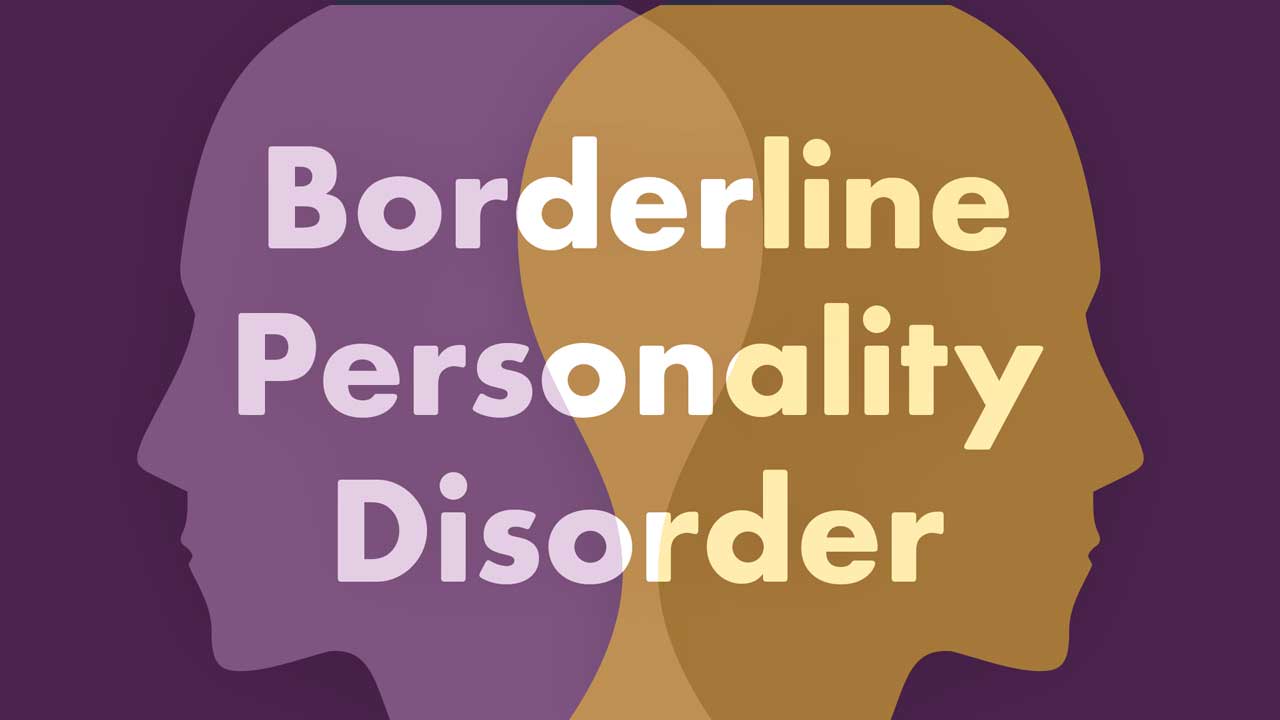What is Borderline Personality Disorder?
Borderline personality disorder (BPD) is a type of mental illness characterised by ongoing instability in the areas of interpersonal relationships, self-image and impulsivity (APA, as cited by Australian BPD Foundation Limited 2024).
The term ‘borderline’ was first used in the era of psychoanalysis when the condition was thought to exist on the border of psychosis and neurosis. However, BPD is now understood to be a disorder in its own right (Salters-Pedneault 2024).
It’s estimated that 1 to 4% of the population is living with BPD (Better Health Channel 2023). Approximately 10% of psychiatric outpatients are estimated to have BPD. The rate is close to 20% for people who are inpatients in mental health wards (Ellison, as cited in SANE 2022).
People living with BPD may experience difficulty in controlling impulses and emotions, relating to people and maintaining a stable self-image (SANE 2022).
Generally, the symptoms of BPD first appear during the teenage years or early adulthood (SANE 2022).
Women are more likely than men to be diagnosed with BPD (SANE 2022).
Unfortunately, BPD is considered to be one of the most stigmatised mental illnesses (Burnside 2023).
This stigma is likely a result of the following three factors:
- BPD has been poorly understood since the term was coined in the 1920s, and the condition was initially considered ‘untreatable’.
- People with BPD have behaviours that are sometimes difficult for clinicians to handle, as they may exhibit antisocial and/or aggressive behaviour.
- The high level of self-harm and suicidality of patients with BPD marks them as particularly at-risk.
(Beatson, as cited by Malcolm 2014)
BPD can be extremely distressing for the person affected, as well as for their family and friends. Fortunately, there are treatments available for BPD. Furthermore, people with BPD have a high recovery rate following diagnosis and treatment (SANE 2022).

How Does Borderline Personality Disorder Present?
Common features of BPD are instability regarding:
- Self-image
- Personal goals
- Interpersonal relationships.
(APA, as cited by Australian BPD Foundation Limited 2024)
This instability is accompanied by impulsivity, risk-taking and/or hostility. The person living with BPD will also present with difficulties in regard to identity, self-direction, empathy and/or intimacy (APA, as cited by Australian BPD Foundation Limited 2024).
DSM-5 Diagnostic Criteria for Borderline Personality Disorder
To form a diagnosis, the above-mentioned patterns of unstable interpersonal relationships, goals, self-image and marked impulsivity will be indicated by five or more of the following:
- Erratic attempts to avoid abandonment (real or irrational)
- Marked and ongoing unstable self-image or sense of self
- Impulsivity in at least two areas that could cause self-harm (for example, reckless spending, reckless sex, substance abuse, reckless driving or binge eating)
- A series of interpersonal relationships that are unstable and intense
- Recurrent suicidal behaviour, gestures, threats or self-mutilating behaviour
- Instability as a result of a marked reactivity of mood (for example, intense episodic dysphoria, irritability or anxiety usually lasting a few hours)
- Persistent feelings of emptiness
- Intense or uncontrollable anger (for example, frequent displays of temper, constant anger or recurrent physical fights)
- Impermanent, stress-related paranoid ideation or severe dissociative symptoms.
(APA, as cited by Australian BPD Foundation Limited 2024)
Causes of Borderline Personality Disorder
There isn’t a singular known cause of BPD (SANE 2022).
However, a complex combination of factors, including genetic predisposition, developmental or psychological problems, neglect, abuse and trauma during childhood, are believed to make certain people more susceptible to developing BPD (SANE 2022).
Treatment for Borderline Personality Disorder

The primary treatment for people living with BPD is psychological therapy. The aim of these therapies is to help people achieve a better understanding of their feelings, responses and behaviours (SANE 2022).
Living with BPD can make a person feel that they have little control over their life. For this reason, establishing good routines, such as eating healthily, exercising and getting sufficient sleep, can help a person regain a sense of control (SANE 2022).
Typically, some symptoms of BPD, such as mood swings and impulsiveness, ease with age (Mayo Clinic 2024).
If you’re in crisis and need support, call Lifeline on 13 11 14. Lifeline is open 24 hours a day, 7 days a week.
Test Your Knowledge
Question 1 of 3
What percentage of psychiatric inpatients are estimated to have borderline personality disorder?
Topics
References
- Australian BPD Foundation Limited 2024, Diagnostic Criteria, Australian BPD Foundation Limited, viewed 18 December 2024, https://www.bpdfoundation.org.au/diagnostic-criteria.php
- Better Health Channel 2023, Borderline Personality Disorder, Victoria State Government, viewed 18 December 2024, https://www.betterhealth.vic.gov.au/health/conditionsandtreatments/borderline-personality-disorder
- Burnside, C 2023, ‘Managing Misconceptions and Stigma Around BPD’, The SANE Blog, 28 September, viewed 18 December 2024, https://www.sane.org/information-and-resources/the-sane-blog/wellbeing/managing-misconceptions-and-stigma-around-bpd
- Malcolm, L 2014, ‘Borderline Personality Disorder’, ABC All in the Mind, viewed 18 December 2024, https://www.abc.net.au/radionational/programs/allinthemind/borderline-personality-disorder/5881922
- Mayo Clinic 2024, Borderline Personality Disorder, Mayo Clinic, viewed 18 December 2024, https://www.mayoclinic.org/diseases-conditions/borderline-personality-disorder/symptoms-causes/syc-20370237
- Salters-Pedneault, K 2024, History of the Term 'Borderline' in Borderline Personality Disorder, Verywell Mind, viewed 18 December 2024, https://www.verywellmind.com/borderline-personality-disorder-meaning-425191
- SANE 2022, Borderline Personality Disorder (BPD), SANE, viewed 18 December 2024, https://www.sane.org/information-and-resources/facts-and-guides/borderline-personality-disorder

